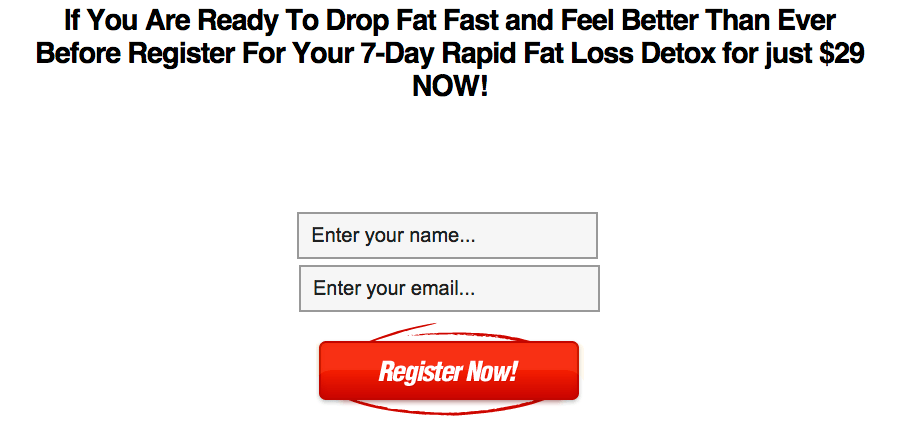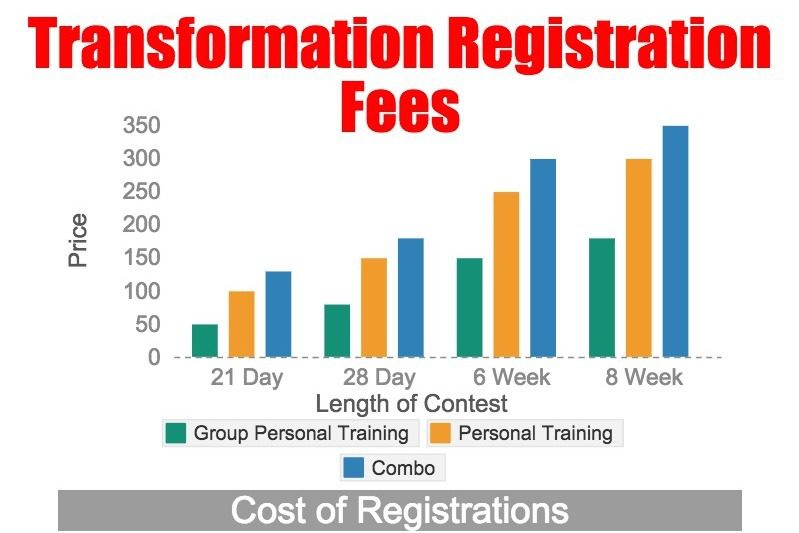Transformation contests are big money and a big way to draw attention to your brand in the fitness world. I literally built my previous business to over 400 clients using transformation contests as the main lead generation source. When other people do it, however, most do it all wrong.
I know because I’ve made many mistakes myself. You won’t have to make the same mistakes because, in this article, I will help you avoid them. I’m going to reveal the system that I used to run dozens of incredibly successful transformation contests.
A bit of background: Over the past decade, I have been obsessed with transformations and I suspect it’s due to my own personal journey (more on that later). But also because I am constantly searching for ways to get better, faster results to help clients reach their goals. In my previous business, it wasn’t uncommon for us to run 6-8 transformation contests a year. A few years ago, when I really started to figure out how to run these contests and get amazing results from them, we ran an 8-week transformation content and were able to get over 125 new clients signed up by the end of it. And the registrations alone brought in over $20,000!

Transformation contests can also transform your business.
ALSO READ: How to Build a Successful Fitness Business
The key is to get in front of more people and deliver better results.
I’ll show you how.
6 ways to set up a successful transformation contest
Oftentimes, the client’s transformation is less about the changes in actual weight and more about the new perspective and outlook on life. Transformation contests are powerful and aren’t going anywhere! And if you’re a coach who helps people lose fat, it’s a great way to show people that you can be really good at getting them the results they want.
So here are six ways to set up your transformation contests to ensure you are successful:
1. Create your plan and your “hook”
One of the biggest reasons that transformation contests work so well is the deadline. The two big deadlines are:
1. A deadline to register
2. A deadline to hit the weight loss goal
When setting up your transformation contest, take a quick look at the calendar and see if you can find a holiday or event (like the start of summer) that is at least several weeks away. This date needs to likely be 6-8 weeks out for a shorter transformation contest, or 12-16 weeks out for a longer transformation contest.
When I used to plan out my yearly marketing calendar at Force Fitness, I’d set up two longer transformation contests each year and fill in the rest with shorter-term transformation challenges or contests. The two big contests were after the New Year, usually starting around the first week of February; and in the fall, around the start of the school year. These proved to be the best times to get people motivated without interruption from other holidays for usually between 6 and 8 weeks.
It is possible to run a longer transformation contest that leads up to the beginning of summer. It all depends on how comfortable you are with marketing two longer contests back to back (New Year and Summer). For the remainder of the year, once the bigger contests were planned, we’d have 21 or 28-day challenges around events or holidays.
To set up your next transformation contest, look for the next holiday or event that gives you at least 21 days to run your program and 3-4 weeks to market your program. Once you have the end date (which also helps you figure out your “hook,” or the main draw), you can work backward to determine the start date and marketing calendar.
The next step is determining your hook, or the theme of your transformation contest. Note that this is an important step, which I have messed up more than once, so don’t take it lightly.
Your hook is what will attract people and let them know this transformation contest is for them. Typically you want to hit on emotion, which will dictate your marketing message, right down to the promotional emails and sales copy. Think of the hook as a reason for people to sign up for the contests, examples include:

Now that you have your hook and the timeline for your contest, you need to determine if you will offer prizes or if this will be a straightforward challenge. You also need to figure out the programming offered, your accountability structure, and how you will take registrations (in the next section).
From Jon: In order to best find your ‘hook’ you need to understand the difference between a ‘benefit’ and a ‘feature’. For help on that, here’s an article to read after: Personal Trainer Marketing – Benefits Vs. Features
2. Don’t complicate your registrations
Generally, you want a strong command of your ability to set up a sales pages and online marketing. However, don’t think that if you can’t set up an online sales page that you can’t run a big contest! I ran my first ever 100+-person contest without a sales page and took all registrations via phone or email. It was a lot more work, but it can be done that way.
And if you can’t do it, it is easy to find someone else who can! Head to a site like Fiverr.com or another outsourcing website to hire someone to set up your sales page. I could have saved myself hours of frustration if I had just found someone to build my pages for me in the first place. But if you want to do it yourself, Leadpages or OptimizePress makes it easy to build out pages yourself. That’s the great thing about technology.
The most efficient way to let people register is to build a sales page that links to your payment processing system. At Force Fitness, we would link our sales page to our Mindbody system to take payments immediately. This is hands down the best way to take registrations, but it isn’t the only way. It’s just very effective because you can get people to commit immediately.
However, if you can’t collect money online (Paypal makes this easy!), then you can simply ask for a name and email and perform a manual follow-up to collect payment from the individual. Don’t make this too complicated. The important part is to be able to get the message out to as many people as possible and let those that are interested to say they want to enter your contest. This is a sample name and email only registration page I created when I was at Force Fitness. Once the customer entered their info, it directed them to a purchase page using Mindbody.

Sample Transformation Contest Opt-in Form
Once you start collecting registrations, make sure to keep good records of payments collected and the logistics of how you will make sure to provide services to all the people signing up. It is much easier to do this as they register than after, when you have dozens of people to coordinate with. There were more than a few times when I had allowed too many people to register and couldn’t sync them up in appropriate training timeslots, which led to us giving out refunds. It’s a good problem to have, but could have been avoided had I been more prepared to see the issue sooner.
3. Figure out your program offerings
Keep this simple.
In my experience, too many options for joining your transformation contest can lead to poor registration numbers. Start with your new client offerings and ask yourself this question:
What program would I put someone on to get them the best results?
When you have an answer, that’s the program you start with.
When setting up transformation contest programs, I always had three offerings that covered a range of price points. I found that any more than that and it would get too confusing and too tough to manage.
1. The first offering was our lowest price, basic members, and usually something like group personal training for 2-3 days per week.
2. The second offering was usually a mid-range offer for personal training 2-3 days per week.
3. Finally, a combination offering of personal training and group training was our highest priced offering for 4-5 days per week.
Your offers depend on the services you provide, but I suggest placing the one you want most people to do in the middle of the range. (Editor’s note: Marketing psychology suggests the middle pricing makes that option the most appealing.)
There’s also no harm in only offering two options.

You can take two approaches when pricing your transformation contests: low cost/high volume or high cost/lower volume. Mixing them up throughout the year is a great strategy and one that I have had a lot of success with in the past. Keeping the longer 6 or 8-week transformation contests at a high price and the 21 or 28-day challenges at a lower price lower cost helped me balance things out. Of course, you can increase your prices as you get more experience in running your contests, get better at marketing them, and the demand goes up.
This depends on your own rates, but I found that $149-199 for longer contests and $49-99 for shorter challenges worked well in a group-training setting; and $199-299 for longer contests and $99-149 for shorter challenges worked well in the one-on-one personal training setting.
4. Determine your prizes
When you set up your contests, it is always fun to offer prizes, but how in the world do you know what to offer? The most obvious (and best) prize would be cold, hard cash.
Let’s first address the fact that people are getting amazing results, or at least they should be, which is the ultimate prize. Anything else is a bonus. Prizes aren’t required to run these challenges, but they are what make a transformation contest work.

Examples of prizes include:
* Cash $$$$$
* Getaways
* Trips
* Joint venture offerings
* Other prizes (physical objects)
Everyone loves cash since they can use it as they see fit. If you are decent with your numbers, you can easily figure out how much cash to offer. It can be a bit of a guessing game with your first few contests, but after you get them down, you can easily determine how much cash to offer.
To do so, start with your registration fees. Take your average registration fee and multiply that by the number of contestants you think you will get. For instance, if your average registration fee is $149 and want to get 35 people signed up, you are left with:
$149 x 35 = $5,215 in registration fees
In this case, I would easily be comfortable with giving away $2,500 as prize money. That still leaves me with $2500+ to pay for expenses of staff and marketing, as well as the bonus of any new client conversions that come out of the contest. If a new client is worth $199/month to you and they stick around for 12 months, that’s $2,399 per new client to your business. If you convert a meager 30% of those 35 sign-ups to new clients, you will get 10-11 new clients, which are worth at least $23,990 to your business in the next year. I would pay $2,500 to get $23,990 in return every day of the week!
If you are worried about paying out that much money in your first contest, keep it small. You can start with $500 and still motivate people to sign up. It doesn’t have to be cash. You can also offer trips by working with a travel agency that provides discounted rates if you buy in bulk; you can pay for a getaway to a local resort; you can work with joint ventures and have them donate prizes; or you can buy bigger prizes to give away. Mixing up your prizes is great, but again, my best experiences have come with a cash prize.
Finally, make sure you have an offer for your clients to join your transformation programs. Typically, anywhere from $49 to $99 for current client registration is a good price point. This price depends on if you are giving them anything extra for registering, such as “bonus days” of training.
5. Have a marketing plan
At this point, you have:
* A date for your contest
* A hook
* Several price points
* Prizes
Now you can start organizing your marketing plan, but this is where things can get tricky for some trainers.
A lot of marketing your contest is sales copy, networking, and Facebook ads, but let me just tell you that you should play to your real strengths. If you are good with people and have a strong network, for example, leverage it. If you are good with Facebook ads and email marketing, leverage it. It is okay to try new things, and if needed, get someone to set them up for you.
I would start with the following:
* Your email list of non-clients
* Your clients for referrals
* Your business connections and joint ventures
* Press releases and media contacts
* Facebook marketing via ads and promoted posts
Don’t overlook your current clients as a possible referral sources either. Encourage them to sign up for your transformation contests and bring their friends.
You need only several weeks of planning if you are working with joint ventures or other offline marketing strategies. If you are working with joint ventures, connect with them in advance to make sure they have time to promote the contests for you. If you are working online, a week or two is all you need to get people registered. Short four to seven-day promos work well when dealing with email marketing or Facebook ads.
One of the best marketing tools that you can use is the social proof, or “proof” that your contests were well-received, from previous contests. Leverage your ‘before and after’ pictures and testimonials from previous transformation contestants, if possible. If you don’t have any from previous contests or if this is your first contest, you do need to prove you can get great results. You may even use testimonials or results from your regular clients, but you should be clear in your promotion of them that they were not from contests.
No matter your marketing plan, make sure to put your best foot forward and make the most of it. What’s important is that you start getting results. Because once you start getting results with your transformation programs, it becomes much easier to market them on social media, as the results tend to go viral.
6. Create your accountability structure
In general, people don’t really want to be held accountable for their actions, but they need it. Most transformation contests promote accountability as a major benefit of signing up, but the problem is, no one is really holding anyone accountable. Many lack a system or structure for it. Instead, they use accountability as bait merely to get people to sign up.
Your accountability program during a transformation contest, however, can be set up easily. There are two main ways that I have incorporated accountability systems into a transformation contest:
* Automated check-ins
* Accountability teams
They both work well if monitored and well-implemented.
Automated check-ins
For automated check-ins, you can use Google Forms or Survey Monkey to organize the forms for your transformation contestants. Set up a few questions on a Google Form (or Survey Monkey form) and have it set to go out in an autoresponder message each Monday. All you and your team need is to check for any red flags and follow up as needed.
Here is an example:

Red flags typically arise out of dissatisfaction with results, lack of results, or obstacles listed. You can follow up with an email telling someone “Great progress!” if you want, or make a quick call to check on a client that is having trouble.
I would set up a form for each week of the contest and track the people who fill them out. If people miss more than one week in a row, I would follow up with them to check in. This system works well if you are willing to set aside the time to review the answers and follow up.
Accountability teams
Accountability teams work well if you have a staff of trainers working for you. Using this system, we assign to each trainer a team of individuals that the trainer needs to check in on weekly, via phone calls and emails. If there was an issue, they would handle it themselves or come to you with questions. You also need to ensure that all trainers are actually doing the follow-up and are prepared to answer the questions they may get. While this system is more personal, it takes a lot more time and energy. Documentation of calls and emails need to be turned in by each coach weekly.
You can use either of these accountability systems, along with set weigh-in periods during a contest to monitor client progress and results. Overall, there will be people who won’t respond to anything you do, but it is your job to give them the opportunity to ask for help and make it easy.










